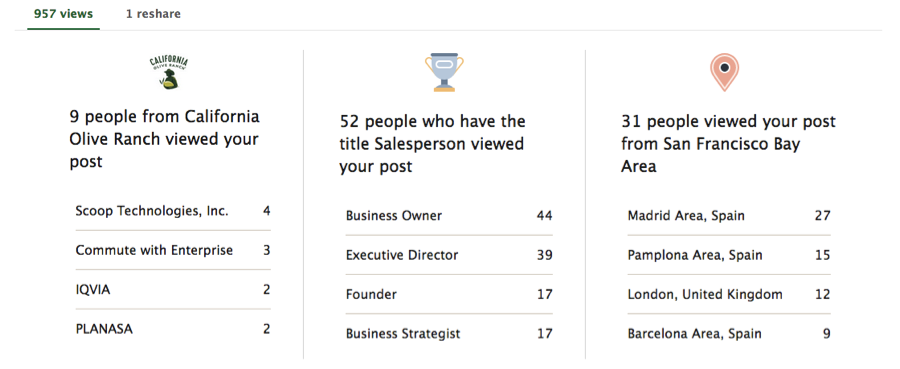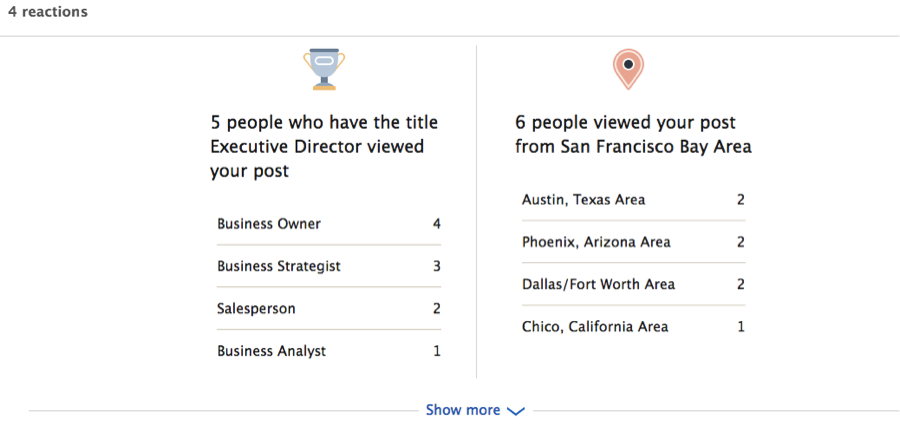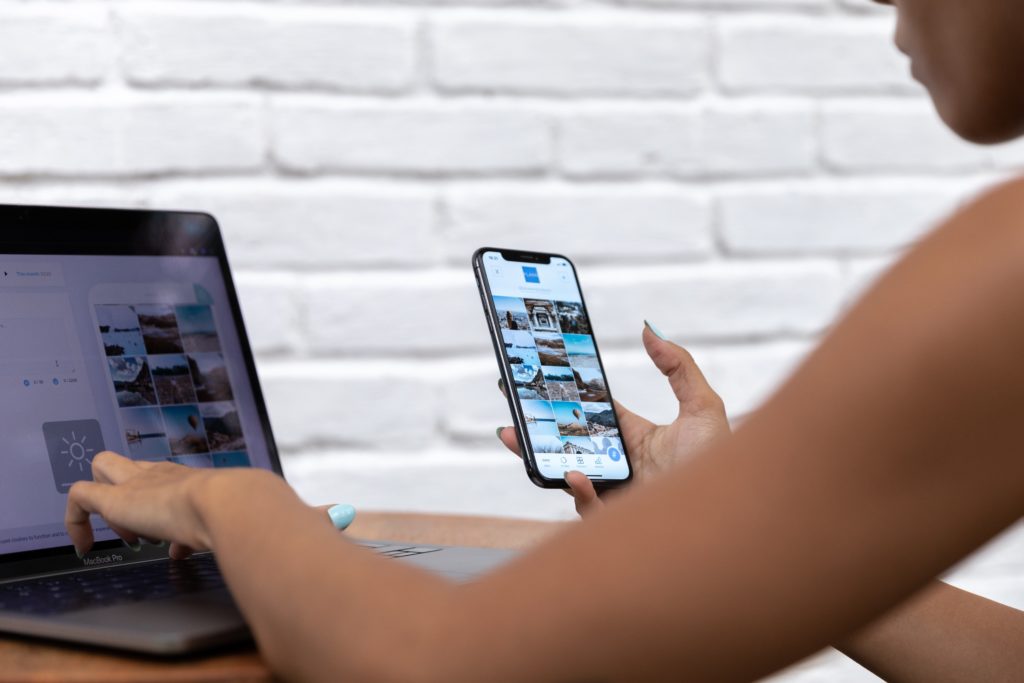LinkedIn is one of the most powerful platforms for engagement and lead generation the Internet has ever seen. It allows for unprecedented access to connect and engage with industry professionals, thought leaders and company executives in a streamlined way many individuals overlook at the time this was written in 2024.
Its use as a digital CV and for job hunting or working with recruiters is well known. However, its power as a B2B growth marketplace is not as recognized, especially for small-to-mid-sized business owners that don’t leverage it for talent acquisition on a regularly basis; we recently ran an exercise for a family-owned and operated, multichannel natural products and skincare company to assess whether they should leverage LinkedIn (LI) for cost effective B2B acquisition.
Experiment Background
This company was founded six years ago. Over 70% of revenue comes from B2B clients and the founders suspect future growth will continue in this channel, as opposed to selling direct to consumer. Prior to this exercise:
- They never engaged on LI (nor created an account)
- Offered a $0 content or creative budget for LI or this particular industry (i.e. trade events, membership fees, etc.)
- Had not experimented with industry trade groups nor professionals in this particular niche online
Thus, we started this exercise on terms that allowed for straightforward comparisons I suspect will benefit many business owners.
Industry Segment
We identified a particular industry segment the company had experienced recent growth in. This segment is a $2 billion dollar industry in the US, with roughly 4% of this generated from domestic producers annually. The average company has fewer than 30 employees and most of its business is offline, with top revenue channels being brick and mortar locations and in-person events, such as farmer’s markets or festivals.
While digital is not their primary channel, it has a lot of focus and investment to help diversify revenues and enhance their repeat customer base. From a social network standpoint, LinkedIn is used far less than Facebook, Instagram, Twitter or YouTube, but you could typically find up to 25% of each business’ employees on the platform.
Our hypothesis was we could create a niche industry-focused channel with high engagement and source at least one high-value B2B lead for almost $0 within two months.
This required a multi-faceted approach:
1) Regular connection adding and new invitation acceptance
2) News feed interactions (mostly “liking” posts from connections)
3) Generating 11 posts
4) Requesting to join trade groups or industry associations
5) Following companies of interest or trade groups
We also were careful to not create an account that felt spam or sales-oriented. Thus, there were a number of things we chose to avoid. This resulted in a cleaner environment for the experiment, which I hope creates more value for you and/or your business:
1) Zero cold outreach was done (i.e. direct messaging employees or business owners)
2) We never used LI’s premium membership nor paid advertisements
3) Only one of 11 posts featured business content or its products, with the remaining 10 being industry-centric (more on this below)
4) We did not invest in other B2B simultaneously, nor promote the LI network through any pre-existing channels, such as email, other social network accounts, etc.
Tactics And What Worked
As opposed to providing a checklist for the array of tactics leveraged, here are the experiments and actions that seemed to make the most significant impact, categorized from the above five approaches:
1) Regular connection adding and new invitation acceptance
– This was maximized during the first ~two weeks given each account begins with zero connections. We specifically searched for people who appeared on the first three pages of search results, adding as many people at a time as LI would allow
– In addition to obvious search terms, once we started running out of people to add we would use the same search term but add a city name and research. For example, if the topic was “papillon shampoo”, we might search “papillon shampoo Dallas”, “papillon shampoo San Diego”, and so forth
– This takes a couple weeks of daily effort, but it really only requires a few minutes per day. After the first one or two weeks, you should start seeing other people begin to add you to their network, which offers a nice added boost. This also increase the pool of people you’re able to add to your network without knowing their email address (this is a LI-imposed set up to encourage people to stick within their industry and/or with people they know)
2) News feed interactions (mostly “liking” posts from connections)
– LI allows for a variety of interactions; we opted for “liking” several posts essentially every time after logging on. We tended to do this more for industry-wide articles, benefits or research, but on occasion would also do so for new company updates or product launches
– Partially due to keeping this as a time efficient experiment, we rarely commented on posts in the feed but it is recommended when relevant to your industry or traction gaining new connections
3) Generating 11 posts
– Given this was essentially a $0 experiment the hypothesis was we could gain a lot of traction early on by sharing other companies or organization’s content. Throughout the two-month term we posted 11 times, generating 4,047 “views of your post in the feed” (this is a standard metric LI provides with each post). This was a little shy of just one time per week. Imagine the reach if we were to post daily, or 60 times!
– The 11 posts consisted of one article our client published months ago (and thus it was $0 added costs), one video found via YouTube, one post on an existing client product launch (this was almost entirely photographs they took, so it cost us $0), one was a reshare of a compelling photograph a newly added connection created and the remaining seven were articles from the leading industry news provider
– No matter the form of post, we added an average of 10 #hashtags for each post – this is very important! This is also relatively simple to do, as once you add one LI automatically suggest others to add – all you’ll need to do is select “Add hashtag”:
– The top post generated 957 views and one reshare. This post was an industry news article, and per LI’s free analytics tool here was the topline breakdown:

– The least viewed post generated 84 views and zero reshares. This was our first post in the experiment, when we had fewer than 50 connections, and ironically was the entry the client had written years ago. According to the same LI report here are the other topline metrics:
– One last highlight worth noting is the “value” of a like, view or connection is still incredibly difficult to measure. The B2B lead that reached out to us that we are most excited about referenced seeing other posts we generated, and that it demonstrated we really have an understanding of the industry, even though he didn’t comment, reshare, etc. – thus, you never fully know the reach or quality connection you are creating from your posts via the above metrics alone. This prospective client even went on to share “__x__ appeared and it’s like they’re everywhere all of a sudden” (referring to what he saw on LinkedIn solely)
– This prospective client also was interested in forming a business partnership in part as he has advised the founder of the existing client product launch referenced above; apparently he was instrumental in helping this company get off the ground decades ago. This kind of detail is not typically listed on a LI profile, so it serves as a nice example of just how powerful (and sometimes surprisingly tight-knit) the nature of networks can be
4) Requesting to join trade groups or industry associations
– This can be easily overlooked and is very important for several reasons: it adds legitimacy to your profile rather quickly, allows you to expand the people you can add to your network and expands your ability to keep track of industry trends (which also informs which industry articles to post, which is both an art and a science)
– We specifically opted for groups that required invitation acceptance and successfully joined four within the first two months
5) Following companies of interest or trade groups
– This tactic doesn’t require you to request an invitation to join, so it’s very easy to do. I’d recommend including companies that are considered leaders in the particular industry segment and/or are most active on LI, existing clients and top industry resource or research publishers. At the two month mark the profile had followed 33 companies or pages
6) Other thoughts
This two-month experiment resulted in 389 connections. One of the reasons this was surprising to me is we spent almost zero time on the profile itself. We simply added a profile picture, a banner and the one (current) job position that persona holds.
This experiment resulted in a high-value, extremely connected profile that has sourced several B2B leads, with one that has a high probability of generating $32,483 annually.
If this were to close, I were to estimate my time at $3,000, and we factor in product sample costs of $500, the total cost for this experiment came to ~$3,535.
That’s an 819% return on investment within the first year alone.
In addition, we had several other business owners reach out. Most of these were general hellos or introductions, but there were a handful that may very well turn into something more significant for our client:
– One is a government official from a Middle Eastern department of agriculture
– Several are CEOs of (relatively small) international brands
– Another is the founder of a supply chain software platform; he offered to create a business profile for us on their marketplace, which includes many business models complimentary to our clients’
At the end of the day, our client was thrilled with the results and we’ll be evolving our approach as they’re to take on new business. We suspect this is just the tip of the iceberg, in part as InsideSales has proved:
“… LinkedIn is responsible for 97% of a business’s social media leads.”
For a preview of future tactics we’ll be leveraging, such as content optimization and advanced search, a recommended read is Neil Patel’s 7 Advanced LinkedIn Strategies for B2B Marketing.
Also, here are two great clips from entrepreneur and social media mogul Gary Vaynerchuk, which have been added since the original experiment occurred and this entry was originally posted:
- A Step by Step Guide to Marketing Your Business on LinkedIn (excellent “influence the influencer” concept)
- The Judgment of Your Own Content Is Slowing Down Your Success (great perspective on what and how often to post)
